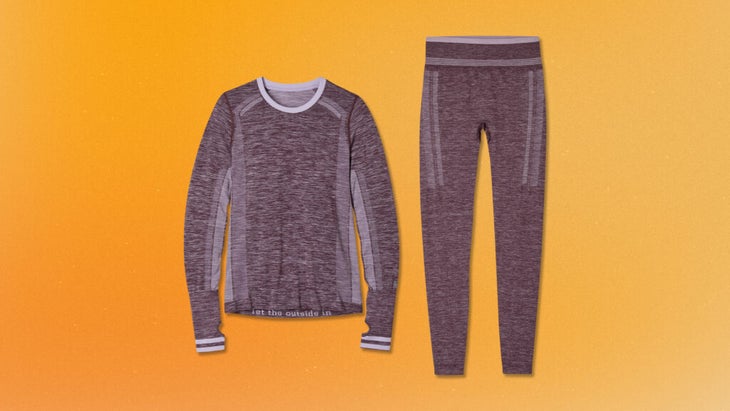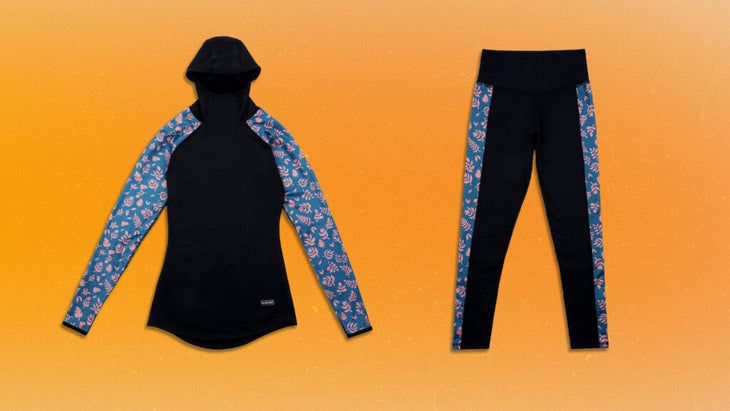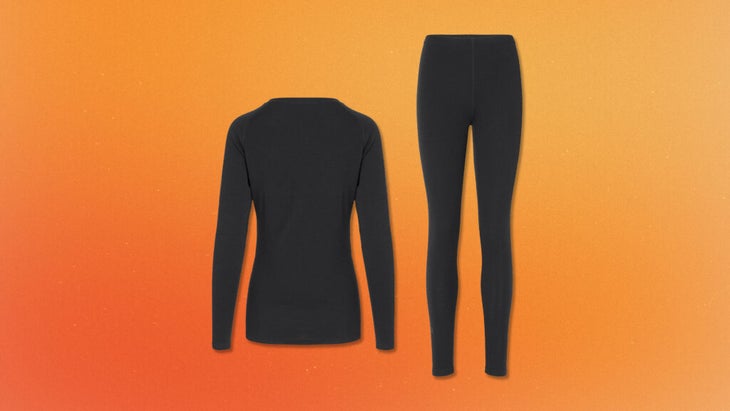Products You May Like
Get full access to Outside Learn, our online education hub featuring in-depth fitness, nutrition, and adventure courses and more than 2,000 instructional videos when you sign up for Outside+
Sign up for Outside+ today.
It’s hard to believe that people used to wear cotton turtlenecks for skiing. Thankfully, the days of spongy, sweat-saturated underclothes are behind us, and we now have an abundance of innovative technical fabrics to keep us warm and dry when we play outside during the winter. But all that innovation means it’s also harder than ever to choose. We spend months testing next-to-skin layers from across the spectrum of material and warmth so we can share the best ones with you.
Looking for men’s baselayers? Check out our reviews here.
How We Test
We enlisted ladies from across the United States and Canada to help us test 46 new baselayers. Our crew—a mix of hard core skiers, recreational athletes, everyday adventurers, and city dwellers—wore these baselayers everywhere from the high deserts of New Mexico and frigid British Columbia to the humid coastlines of Georgia and Greenland. Each one tested for temperature performance, fit, style, moisture management, and overall comfort.
Related: These are our favorite merino-wool next-to-skin layers.
Tester Stats
Number of Testers: 21
Number of Products Tested: 46
Coldest Day: -10F
Hottest Day: 85F
Lowest Elevation: Sea Level
Highest Elevation: 11,570’
Reviews: The Best Women’s Baselayers of 2023
Stio Basis Seamless Tech Crew and Tight Set ($89 top, $89 bottom)

This form-fitting crew top and tight set will quickly become one of your everyday midweight layering favorites. The bottoms are made from a stretchy blend of nylon, polyester, and spandex; the top is made from a similarly stretchy nylon-poly fabric. (Stio measures and offsets the carbon emissions produced during the manufacturing of these products.) We put these layers on four female testers of average height ranging from size small to large for several negative Fahrenheit days on the hill, and the responses were unanimous: the breathable, buttery soft midweight fabric is perfect for layering in freezing conditions, and for wearing alone in warm and unpredictable spring weather. Another highlight is the seamless design. Both pieces are constructed using a textured knitting process, which produces areas of thinner mesh in high-heat zones like the underarms for better moisture transfer. One of our testers appreciated this aspect in particular while training for an Ironman—no chafing!—as well as the bottoms’ wide waistband, which stays put.
Size: S-L
Bottom line: A light, versatile midweight for everyday adventures all year long.
BlackStrap Therma Hooded Top and Legging Set ($89 top, $79 bottom)

Every winter kit needs a set of extra-warm baselayers for seriously cold temps or days when you’re moving slowly. This year, BlackStrap’s stood out. Both the top and bottom are made with a hefty, four-way-stretch polyester-elastane blend that kept our most cold-averse tester toasty warm on a Utah powder day while she was learning how to ski. While the material is mostly to credit, small features on the top help boost coziness: a hood and a drop hem, the latter of which provides extended coverage under shell pants. Meanwhile, the bottoms boast a wide, snug waistband that prevents slippage so we never had to deal with gaps where cold air could get through. Bonus points for the UPF 50+ protection and the antimicrobial treatment, which wards off odor.
Size: XS-XL
Bottom line: An extra-warm heavyweight for long resort days and ladies who get gold easily.
66 Degrees North Básar Set ($125 top, $110 bottom)

This relaxed-fit midweight set is best for layering on medium to cold ski days, which is something this brand’s Icelandic founders and designers know about. It’s made from hefty, thick 100 percent merino wool fabric, which naturally regulates body temperature and manages moisture. We sent our team of testers out in a wintry mix of conditions in and out of bounds and found that despite its 235-gram weight (that’s high on the density scale), the Básar has a light wispy feel. This means it gives off the warmth of a thick layer without the bulk, and that it dries very quickly. We also loved the flat-needle stitching, which eliminates any rubbing and adds to the luxurious feel.
Size: XS-2XL
Bottom line: A hefty midweight that’s cozy but breathable
Smartwool Intraknit Thermal Merino Base Layer Quarter Zip ($135)

Smartwool’s new slim-fit quarter zip is great on its own or for pairing with other layers on sub-freezing days. The 200-gram merino-polyester-elastane blend is heavy—exactly what testers wanted during a series of unrelenting snowstorms in Utah. Yet, the material surprised us with fast dry times. That’s because of a 3D mapping process where the garment is knit more thinly and breathably in areas where women sweat more, such as the lower back and chest. Ventilation aside, testers also gave this top high marks for not stretching out after several wears (just don’t put it in the dryer when you finally do wash it). That’s good, because it’s so stylish, everyone wanted to keep wearing it after lifts stopped spinning: it’s flatteringly slim, but not too tight, and has a tall collar, which lends the appearance of a sweater. This is the piece we’d take with us on a ski vacation, because it’s sophisticated enough to wear to dinner.
Size: XS-XL
Bottom line: An uber-warm baselayer that’s fashionable enough to double as a technical sweater for casual nights about town.
How to Buy Women’s Baselayers
Look for fabrics that emphasize breathability and durability (seamless construction is a bonus), like merino wool blends or synthetics. Merino is pricier than other materials, but it’s wrinkle resistant and naturally resists odor and regulates body temperature. Synthetic materials are often more inexpensive; they’re also hydrophobic and thus dry faster than merino. Some synthetic layers are treated with an anti-microbial coating to prevent odor, the ones that are not may cling to smells even after washing. Regardless of material, know this: the higher the gram count, the warmer the layer will be.
Other features are secondary: thumboles to help keep sleeves from riding up under your jacket, a drop tail that makes it easier to tuck your layers into ski pants. Zip necks are better for ventilation, while crewnecks are simpler and less bulky.
One note on garment care: let your merino and synthetic layers air dry instead of tossing them in the dryer, since both can shrink, unless the care instructions say otherwise. They’ll also last longer.
